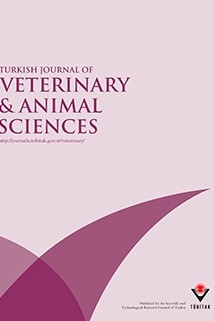
Turkish Journal of Veterinary and Animal Sciences
Yazarlar: Nazmi TEKELİOĞLU
Konular:-
Anahtar Kelimeler:Sea bass (Dicentrarchus labrax),DL-alanine,L-glutamic acid,Attractants
Özet: In this study, the effects of food supplemented with different levels of DL-alanin and L-glutamic acid (1% and 2%) on the growth of sea bass juveniles were investigated. Fish fed with L-glutamic acid (1% of diet) and DL-alanin (1% of diet) supplemented diets had greater weight gains (54.23 ± 1.51 g and 55.03 ± 1.69 g, respectively) than those fed with a control diet (47.59 ± 1.83 g) (p < 0.05). It was found that the groups fed with 1% of attractant-supplemented diets had better food conversion ratios (1.11 and 1.13, respectively) than the control group (1.22) (p < 0.05). It was also found that the wet weight gain and food conversion ratios of the groups fed with 2% L-glutamic acid and DL-alanine were similar to those fed with the control diet and 1% attractant-supplemented diets (p > 0.05).